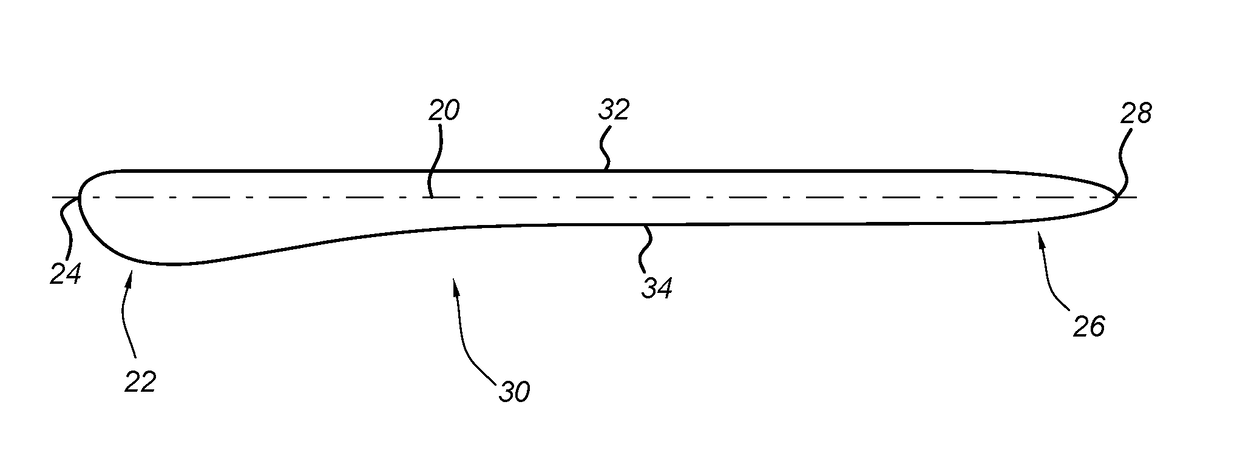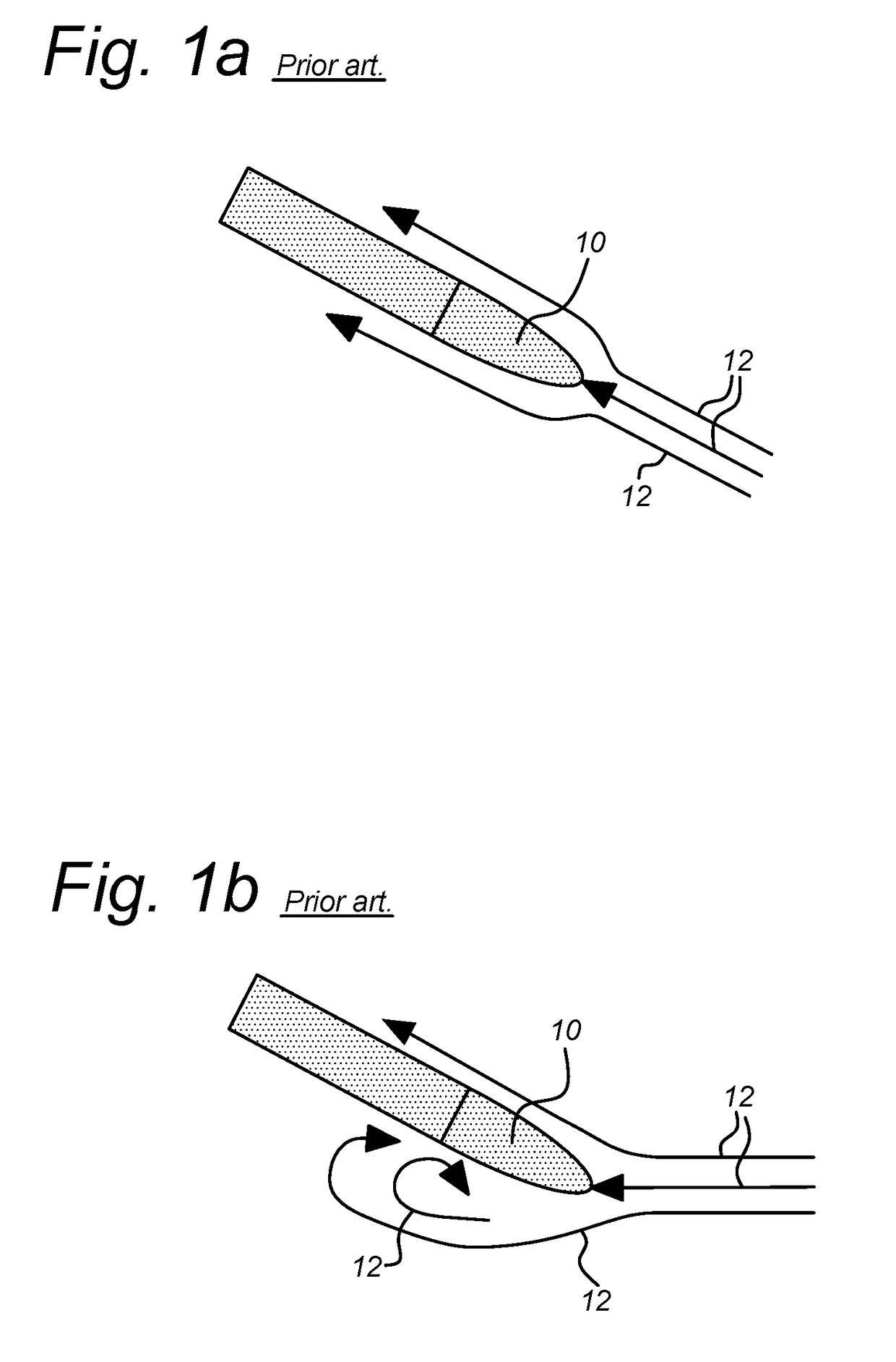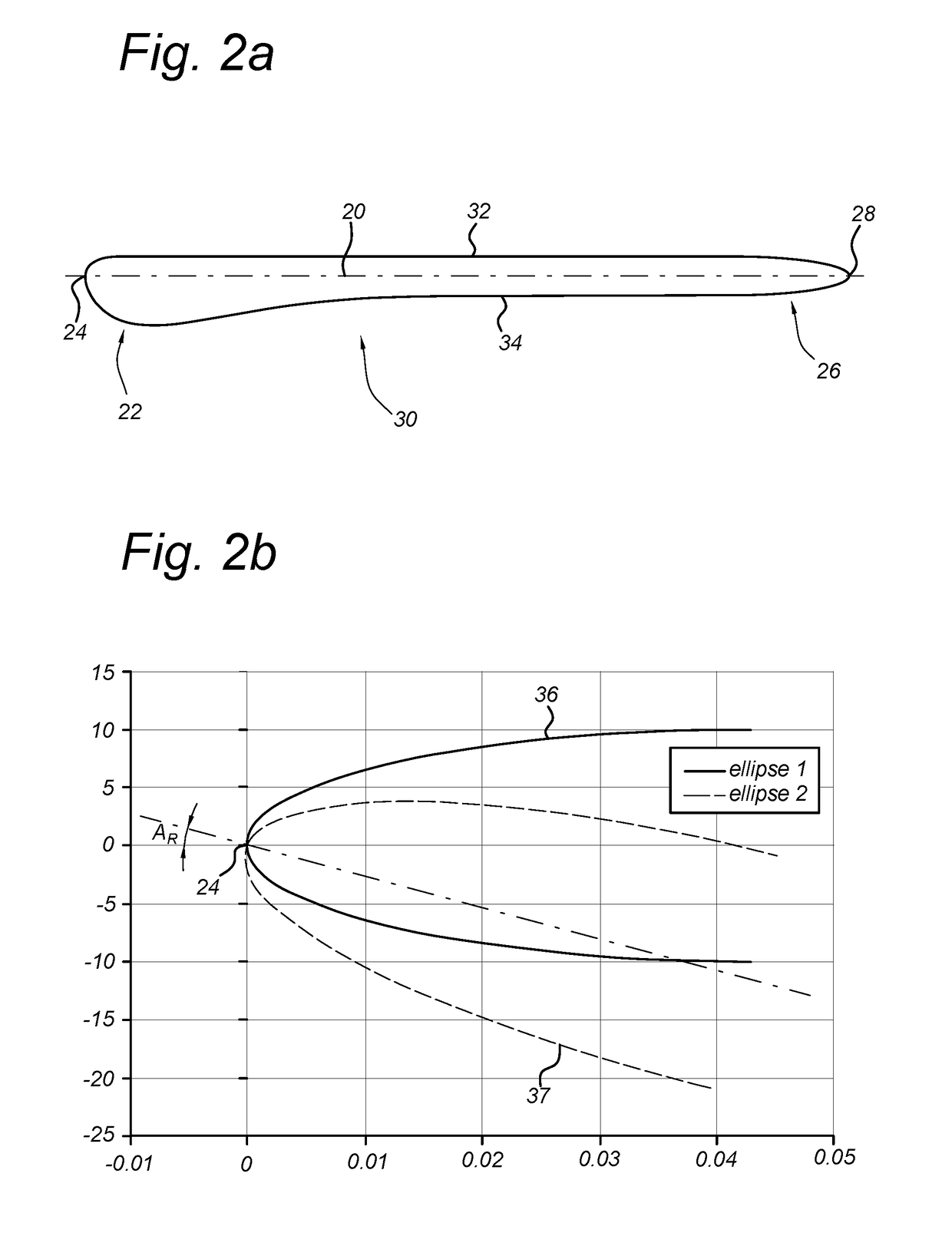Impeller blade with asymmetric thickness
a technology of asymmetric thickness and impeller blade, which is applied in the direction of non-positive displacement fluid engine, pump components, liquid fuel engine components, etc., can solve the problems of reducing the energy reducing the efficiency of the pump, and not specifically addressing the design of the blade for optimal performance in a variety of different flow conditions. , to achieve the effect of reducing the energy consumption of the pump, and reducing the energy consumption
- Summary
- Abstract
- Description
- Claims
- Application Information
AI Technical Summary
Benefits of technology
Problems solved by technology
Method used
Image
Examples
Embodiment Construction
[0025]FIG. 1a is a view of a prior art blade 10 aligned to incoming flow, and FIG. 1b is a view of prior art blade 10 not aligned to incoming flow. FIGS. 1a-1b include arrows 12 indicating flow around blade 10. Blades for impellers are typically designed to align with a set incoming flowrate at a specific rotation speed, as shown in FIG. 1a. When a condition occurs where the blade is not aligned, either due to a different flowrate, a different rotation speed or both, flow separation can occur. This flow separation occurs when the angle between the blade and the incoming flow becomes too large, and causes the flow 12 to no longer follow blade 10 contour and detach from blade 10 surface. This flow separation, as shown in FIG. 1b, can result in high energy losses within the flow, significantly reducing the energy efficiency of the pump in which the blade and impeller rotate.
[0026]FIG. 2a is a cross-sectional view of an impeller blade 20 with a specific profile to encourage flow to rema...
PUM
 Login to View More
Login to View More Abstract
Description
Claims
Application Information
 Login to View More
Login to View More - R&D
- Intellectual Property
- Life Sciences
- Materials
- Tech Scout
- Unparalleled Data Quality
- Higher Quality Content
- 60% Fewer Hallucinations
Browse by: Latest US Patents, China's latest patents, Technical Efficacy Thesaurus, Application Domain, Technology Topic, Popular Technical Reports.
© 2025 PatSnap. All rights reserved.Legal|Privacy policy|Modern Slavery Act Transparency Statement|Sitemap|About US| Contact US: help@patsnap.com



